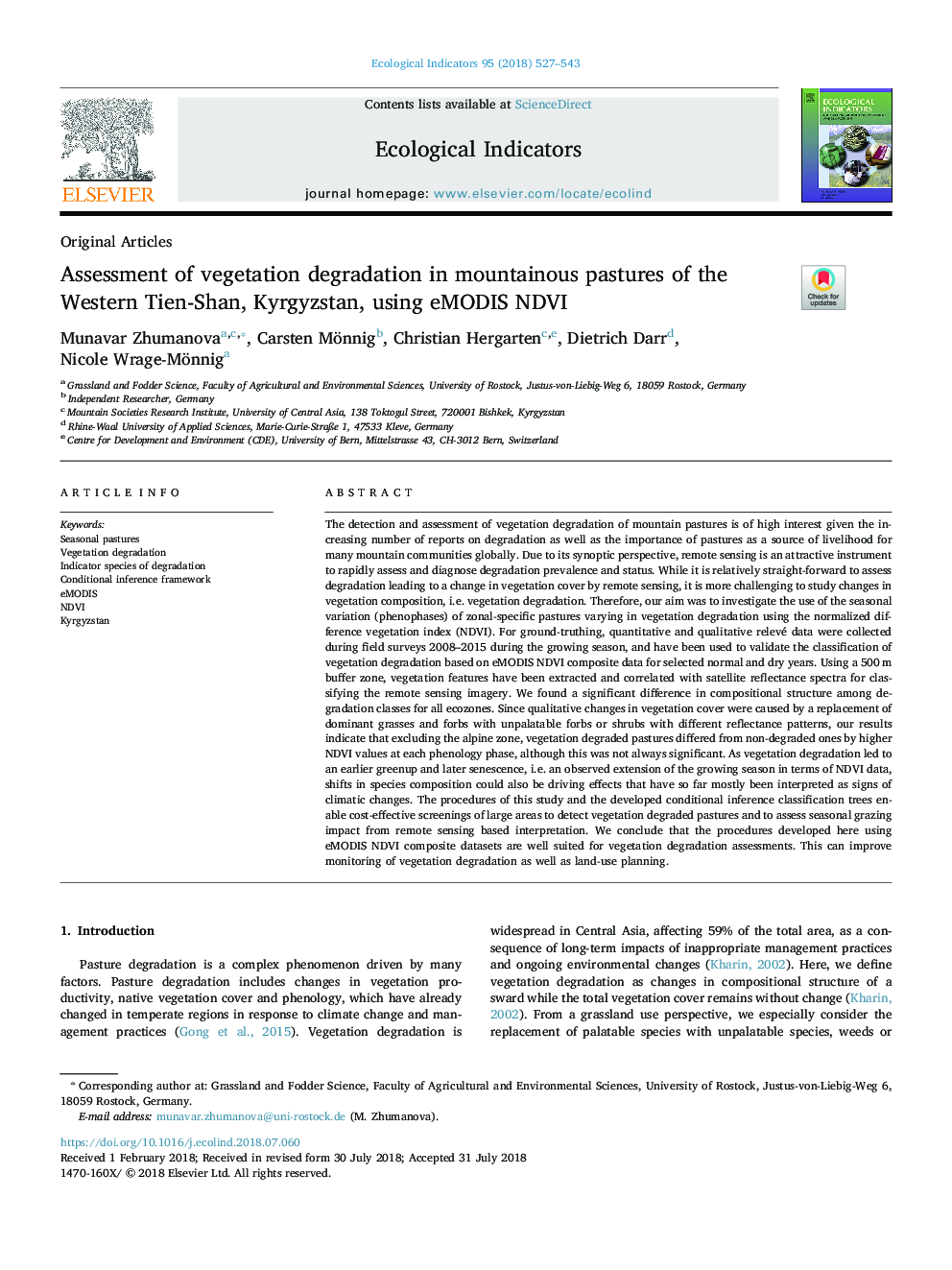| Article ID | Journal | Published Year | Pages | File Type |
|---|---|---|---|---|
| 8844994 | Ecological Indicators | 2018 | 17 Pages |
Abstract
The detection and assessment of vegetation degradation of mountain pastures is of high interest given the increasing number of reports on degradation as well as the importance of pastures as a source of livelihood for many mountain communities globally. Due to its synoptic perspective, remote sensing is an attractive instrument to rapidly assess and diagnose degradation prevalence and status. While it is relatively straight-forward to assess degradation leading to a change in vegetation cover by remote sensing, it is more challenging to study changes in vegetation composition, i.e. vegetation degradation. Therefore, our aim was to investigate the use of the seasonal variation (phenophases) of zonal-specific pastures varying in vegetation degradation using the normalized difference vegetation index (NDVI). For ground-truthing, quantitative and qualitative relevé data were collected during field surveys 2008-2015 during the growing season, and have been used to validate the classification of vegetation degradation based on eMODIS NDVI composite data for selected normal and dry years. Using a 500â¯m buffer zone, vegetation features have been extracted and correlated with satellite reflectance spectra for classifying the remote sensing imagery. We found a significant difference in compositional structure among degradation classes for all ecozones. Since qualitative changes in vegetation cover were caused by a replacement of dominant grasses and forbs with unpalatable forbs or shrubs with different reflectance patterns, our results indicate that excluding the alpine zone, vegetation degraded pastures differed from non-degraded ones by higher NDVI values at each phenology phase, although this was not always significant. As vegetation degradation led to an earlier greenup and later senescence, i.e. an observed extension of the growing season in terms of NDVI data, shifts in species composition could also be driving effects that have so far mostly been interpreted as signs of climatic changes. The procedures of this study and the developed conditional inference classification trees enable cost-effective screenings of large areas to detect vegetation degraded pastures and to assess seasonal grazing impact from remote sensing based interpretation. We conclude that the procedures developed here using eMODIS NDVI composite datasets are well suited for vegetation degradation assessments. This can improve monitoring of vegetation degradation as well as land-use planning.
Keywords
Related Topics
Life Sciences
Agricultural and Biological Sciences
Ecology, Evolution, Behavior and Systematics
Authors
Munavar Zhumanova, Carsten Mönnig, Christian Hergarten, Dietrich Darr, Nicole Wrage-Mönnig,
